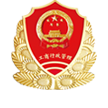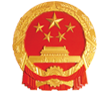 400 867 2009
400 867 2009全民所有制企業(yè)改革
全民所有制企業(yè)改革是中央提高國(guó)有企業(yè)活力、實(shí)施做強(qiáng)做大國(guó)有企業(yè)方針的重大戰(zhàn)略舉措。改革開放40年,全民所有制企業(yè)改革像一根紅線貫穿始終。1978年到1984年之間,全民所有制企業(yè)改革主要圍繞擴(kuò)大企業(yè)自主權(quán)進(jìn)行試點(diǎn),這一階段,在計(jì)劃制訂、產(chǎn)品銷售、利潤(rùn)留存等方面,政府給企業(yè)下放了一些權(quán)力,特別是實(shí)行了企業(yè)留利制度,使國(guó)有企業(yè)在發(fā)展生產(chǎn)、改善職工集體福利和獎(jiǎng)勵(lì)職工等方面有了一定的財(cái)力。1986年12月,國(guó)務(wù)院做出《關(guān)于深化企業(yè)改革增強(qiáng)企業(yè)活力的若干規(guī)定》,全民所有制改革正式啟動(dòng)。規(guī)定提出,全民所有制小型企業(yè)可積極試行租賃、承包經(jīng)營(yíng),全民所有制大中型企業(yè)要實(shí)行多種形式的經(jīng)營(yíng)責(zé)任制,各地可以選擇少數(shù)有條件的全民所有制大中型企業(yè)進(jìn)行股份制試點(diǎn)。這在更深的層次上解決了作為經(jīng)濟(jì)主體的國(guó)企缺乏積極性、整體經(jīng)濟(jì)效率不高的問(wèn)題,同時(shí)也進(jìn)一步消除了人們對(duì)不同所有制企業(yè)間的偏見和歧視。
1993年召開的十四屆三中全會(huì)明確了國(guó)有企業(yè)改革的方向是建立“產(chǎn)權(quán)清晰、權(quán)責(zé)明確、政企分開、管理科學(xué)”的現(xiàn)代企業(yè)制度。1997年召開的黨的十五大提出,要著眼于搞好整個(gè)國(guó)有經(jīng)濟(jì),抓好大的,放活小的,對(duì)國(guó)有企業(yè)實(shí)施戰(zhàn)略性改組。2002年召開的黨的十六大提出了深化國(guó)有資產(chǎn)管理體制改革的重大任務(wù),要求建立中央政府和地方政府分別代表國(guó)家履行出資人職責(zé)的制度。2017年召開的黨的十九大強(qiáng)調(diào),要完善各類國(guó)有資產(chǎn)管理體制,改革國(guó)有資本授權(quán)經(jīng)營(yíng)體制,加快國(guó)有經(jīng)濟(jì)布局優(yōu)化、結(jié)構(gòu)調(diào)整、戰(zhàn)略性重組,促進(jìn)國(guó)有資產(chǎn)保值增值,推動(dòng)國(guó)有資本做強(qiáng)做優(yōu)做大,有效防止國(guó)有資產(chǎn)流失。深化國(guó)有企業(yè)改革,發(fā)展混合所有制經(jīng)濟(jì),培育具有全球競(jìng)爭(zhēng)力的世界一流企業(yè)。簡(jiǎn)言之,經(jīng)過(guò)40年的改革,全民所有制企業(yè)的管理體制和運(yùn)行機(jī)制發(fā)生了根本性的變化,運(yùn)行質(zhì)量和發(fā)展速度有了顯著提高,國(guó)有經(jīng)濟(jì)的控制力和影響力大大增強(qiáng)。
Reform of SOEs
Reform of the enterprises that are owned by the whole people, commonly known as "state-owned enterprises" (SOEs), is a major central leadership action designed to invigorate these companies and make them bigger and stronger. This reform has continued throughout China's four decades of reform and opening up.
From 1978 to 1984 reform experimented with giving more decision-making power to the enterprises. The government delegated some powers to them for planning, product marketing, and profit retention. The profits reserved gave the SOEs financial resources to develop production, reward their workers, and improve their welfare.
In December 1986 the State Council issued a document on further reform to invigorate these enterprises, marking the formal launch of SOE reform. The document permitted small SOEs to try leasing and contracting operations, and large and medium-sized ones to adopt diverse forms of responsibility systems in operating their business. A few large and medium-sized SOEs in different localities were selected to experiment with shareholding systems. On a deeper level this tackled such problems as lack of initiative and low economic efficiency. It also removed public bias and prejudice against ownership models other than state ownership.
The Third Plenary Session of the 14th CPC Central Committee made it clear that the goal of SOE reform was to introduce a modern corporate structure featuring "clearly established ownership, well-defined power and responsibility, separation of government administration and enterprise management, and scientific management."
The 15th CPC National Congress held in 1997 stated that in order to improve the state sector as a whole, China would conduct strategic reorganization of SOEs by managing large enterprises well and relaxing control over small ones.
The 16th CPC National Congress set the task of reforming the state assets management system by introducing a system under which the central and the local governments would assume the responsibilities of investors on behalf of the state.
The 19th CPC National Congress underscored the need to improve the systems for managing different types of state assets, and reform the system of authorized operation of state capital. In the state-owned sector, China will step up improved distribution, structural adjustment, and strategic reorganization. It will ensure that state assets maintain and increase their value, support state capital assets in becoming stronger, doing better and growing bigger, and prevent any loss of state assets. It will further reform SOEs, develop mixed-ownership economic entities, and turn Chinese enterprises into world-class, globally competitive firms.
Thanks to 40 years of reform, SOEs have seen fundamental changes in their management and operation systems, enhanced quality of operation and faster growth, and greater leverage and influence on the part of the state sector of the economy.
| 杭州翻譯公司,杭州翻譯公司哪個(gè)好,杭州翻譯公司收費(fèi)標(biāo)準(zhǔn) | ||||
| 浙公網(wǎng)安備 33010802003197號(hào) 浙ICP備15039916號(hào) |
||||
 |
 |
 |
||